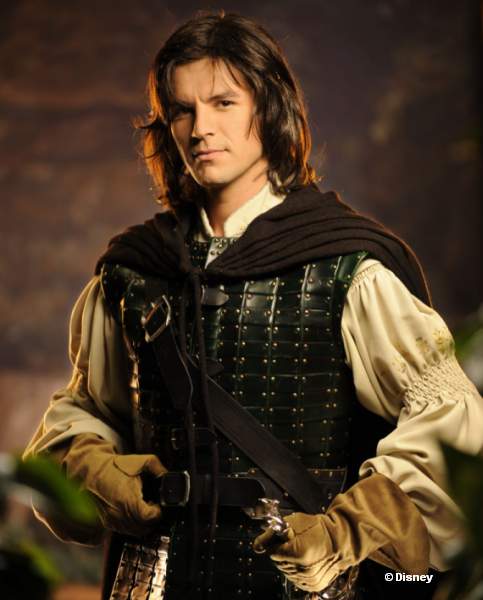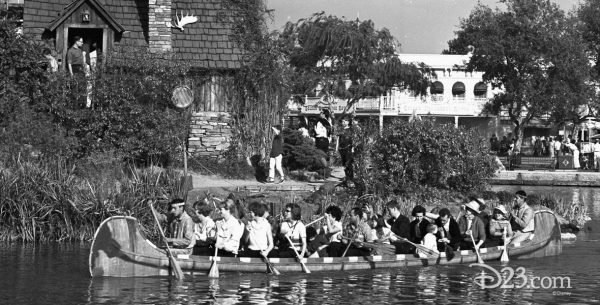Journey into Narnia
One of the most important moments in 21st century theme park history happened when Disney failed to finalize a deal for the rights to the Harry Potter franchise. Universal Studios capitalized on their miscalculation, and that’s why their theme parks are spiking in traffic over the past few years. Amusingly, Disney still offered an attraction based on a literary fantasy staple. It just wasn’t the right one.
In 2001, Warner Bros. released the first Harry Potter movie, and it instantly became one of the most popular global releases of all-time. Soon afterward, The Lord of the Rings: The Fellowship of the Ring became the second literary adaptation of a fantasy novel to dominate at the box office. Disney’s movie division witnessed the potential for such productions and quickly moved to film their own. They chose the C. S. Lewis The Chronicles of Narnia franchise, which also had seven books. Disney dreamt of their own decade of box office hits, matching Potter every step of the way. That notion proved laughable, and the company cut ties with the film series after its second release.

Image: Disney
Since Disney is all about synergy, they weren’t about to miss a promotional opportunity for their upcoming release. They constructed Journey into Narnia as a trial run for a larger Narnia presence at that parks, not realizing at the time that The Lion, the Witch, and the Wardrobe would prove to be the only story consumers wanted to watch. Park designers appropriated some of the space from the disassembled Backstage Studio Tour at Disney’s Hollywood Studios.
Journey into Narnia’s attempt at theming involved its entrance. Guests walked through an actual wardrobe to the exhibition. There, the attraction itself was a glorified show. A “Frozen Forest” theme consisting of snow-filled trees on the sides of the room sold the idea that the Wardrobe transported visitors to Narnia. What Disney meant by “Narnia” was a giant 150-inch movie screen that added a wintery backdrop and showed a few key scenes from the movie.
The rest of the showroom consisted of set pieces from the film, and the grand moment from the attraction happened when The White Witch, the villainess, appeared. Basically, it was Universal’s Terminator 2 3-D premise modified to fit the Narnia universe. It was lazy by any standard but especially relative to the expectations theme park tourists have for Disney.
How well did this experiment work out for Disney? Let’s think about it in box office terms. The first Narnia movie earned $745 million worldwide. The second one only managed $420 million. Basically, the moment people reached Narnia and met the White Witch for the first time, they got bored. C.S. Lewis, a revered author, deserved a better adaptation, and The Lion, the Witch, and the Wardrobe deserved a better attraction.
Indian War Canoes
Okay, the name alone…
A lot of Disney’s earliest ideas for attractions came down to a single issue: were they economical? As you’ll see again on this list, boats definitely fit the bill. Disneyland included a large body of water, and constructing canoes didn’t cost Uncle Walt and his team much. In fact, this particular ride cost only $100,000 to build in 1956, which is the equivalent of less than $900,000 today. You can’t shoot a movie scene for a Disney production for that little.
Of course, you also get what you pay for. When you think of Disney theme park attractions, low-rent canoe rides don’t spring to mind. In fact, the corporation founder eschewed such conventional fare as a rule. A masterful showman, he understood that he’d never maintain the Happiest Place on Earth unless the features at his place seemed dramatically superior to those of the lesser competitors in the amusement park industry. Despite that philosophy that drove the implementation phase of Disneyland, he still demonstrated pragmatism on occasion.
Indian War Canoes was such an instance. Extremely loosely based on the popular Davy Crockett television series, it provided park guests with the opportunity to take a boat trip around the waters of Frontierland. There was just one catch. The decidedly politically incorrect attraction was on the nose with its name. It was an actual canoe, not a machine-powered vehicle. Yes, that means this “ride” required the people on board to row, row, row the boat gently down the stream. Before park visitors boarded these racially cliché canoes, cast members handed out oars. Imagine how enjoyable the experience was during a California summer heat wave.
Image: Disney
Cultural sensitivity was also not a strong suit of this particular attraction. Burly Native Americans in stereotypical attire helmed the front and back of the boat. Their presence was requisite for three reasons. The first was that the canoes were oftentimes filled with lots of small children, and kids are not born with rowing expertise. Some of the muscle had to come from the cast members.
Also, since this ride wasn’t on rails and had no defined path, guides were necessary to avoid what my wife and I call Swan Boat Incidents. That’s when two people accidentally work at cross purposes while steering a water vessel. For the sake of our relationship, we had to eliminate Swan Boats as the romance of them gets lost in all the screaming about who’s going the wrong way. Without guides navigating the path, a few park guests might have wound up in the Pacific Ocean, which would have been amazing since we’re talking about man-made bodies of water that don’t connect to said ocean.
The final purpose of their presence ties into another attraction listed below. The waters of Disneyland were surprisingly populated with seafaring vessels. Without proper guidance, well, there’s a sinking boat story yet to come in this article, but more could have easily taken place.
The name that we now consider Washington Redskins-ish is a key reason why Indian War Canoes no longer exists in its original form. Fifteen years after its introduction, Disney officials started to appreciate that what they had was a blemish on the park’s reputation. So, they did something clever. They shut down the attraction permanently in 1971 when they shuttered a section of Frontierland called Indian Village.
That’s only half the story, though. By the summer of 1971, they had added more appropriate themed elements with Disney ties. From the ashes of Indian War Canoes, Davy Crockett Explorer Canoes arose. It’s still a ride that makes more sense for outdoor adrenaline junkies, but Disney likes the premise and, more important, the cost was low enough that they’ve replicated it at most of their parks.


Comments
I'd never heard of 'Splashtacular' but after reading this really interesting report I might risk speaking out and saying I didn't think it looked too bad, lol!! The idea of a big fan-fare daytime show at Epcot would still be welcome today, maybe?
Great report and thanks for putting it together.